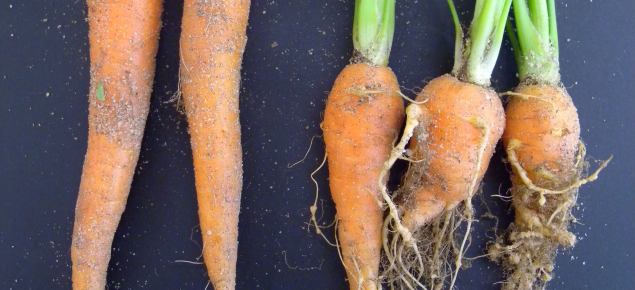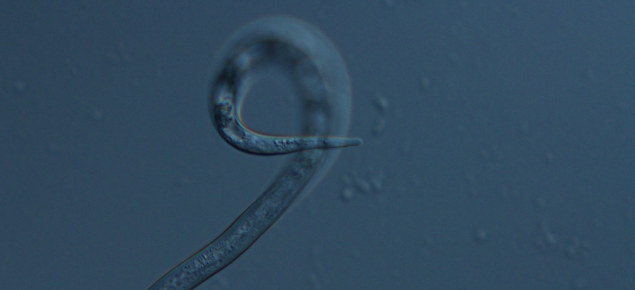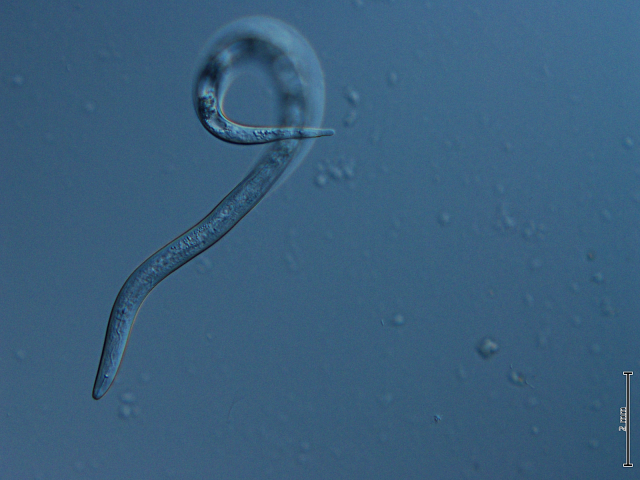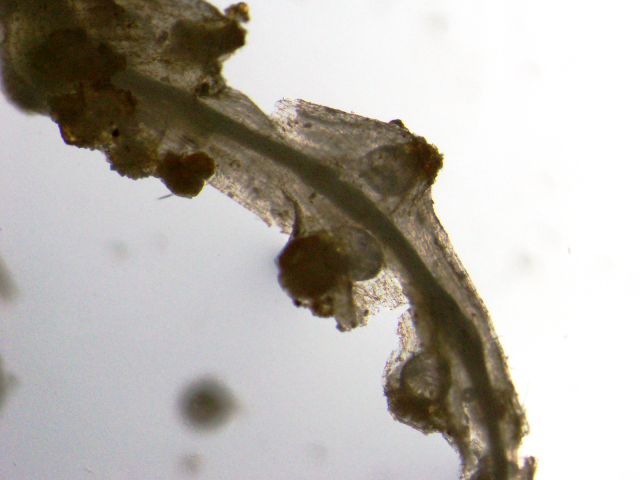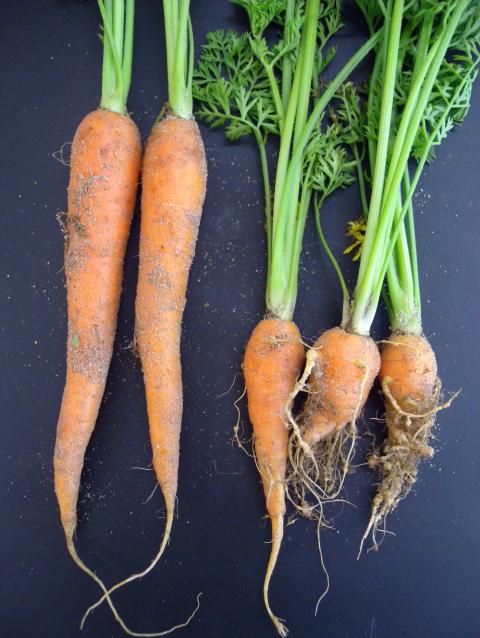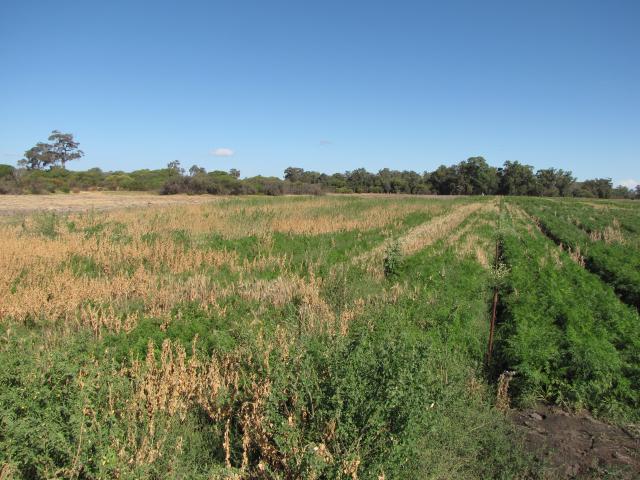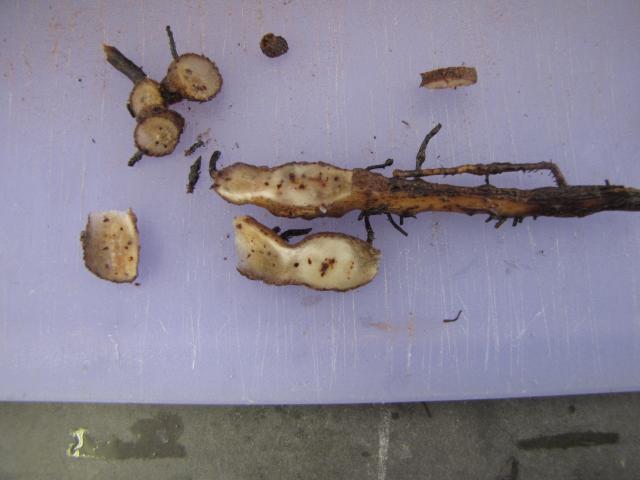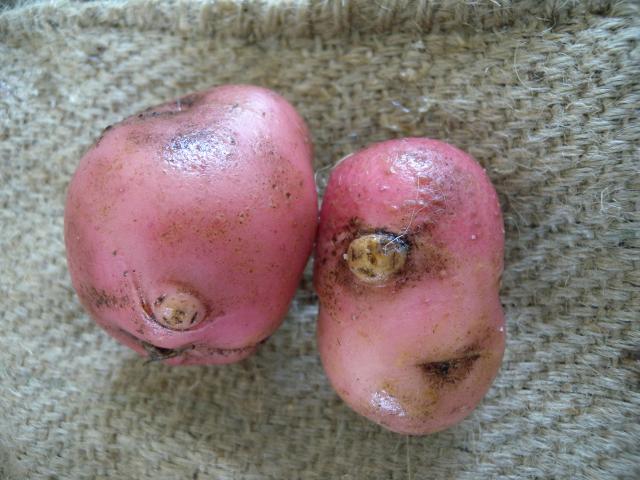Introduction
Root-knot nematodes (Meloidogyne species) are unsegmented round worms which are invisible to the naked eye. They are plant-parasitic with a broad host range which includes vegetables, field crops, tree and vine fruits, ornamentals, pastures and some weed species.
Worldwide, root-knot nematodes reduce the yield of many horticulture crops including carrot, potato, sweet potato, tomato, capsicum, pumpkin, zucchini, avocado, grapes and lettuce. They favour the sandy soils common throughout the South West of WA.
A survey of vegetable growing areas in 2010 — including Lancelin, Gingin, Myalup, Busselton and Pemberton — detected root-knot nematodes in 70% of the paddocks sampled.
Distribution
In Western Australia, we have several species including Meloidogyne javanica, M. hapla, M. arenaria, M. incognita and M. fallax. Root-knot nematode species are difficult to differentiate and require the expertise of a nematode taxonomist or molecular analysis.
Information on root-knot nematode distribution is available but due to the difficulty of identifying individual species, there is little information about the distribution of each species in WA.
Information on particular species is listed below:
- Root-knot nematodes are common in the horticulture areas in the South West of WA where the most common species are Meloidogyne hapla and M. javanica.
- Meloidogyne hapla prefers cooler soils and is more common south of Bunbury.
- Meloidogyne javanica prefers warmer soils and is more common north of Bunbury.
- Meloidogyne arenaria is common in vineyards and on subterranean clover pastures.
- Meloidogyne fallax was first described in WA in 2006, has a limited distribution and may prefer cooler soils.
- Distribution of Meloidogyne incognita is not known.
- Root-knot nematodes are also found in WA’s northern banana plantations.
- A paddock may contain more than one species of root-knot nematode.
Life cycle
Juveniles hatch from eggs and travel through the soil to invade new roots or can remain in the same root as the female. They rely on live roots to feed and reproduce.
Juveniles undergo a series of moults inside the roots until they mature. Females continue to feed within the root, stimulating plant cells to enlarge and form a gall. Females can produce viable eggs without males.
As it grows, the female often breaks through the outer surface of the root so that her rear protrudes. She then lays a large number of eggs into a gelatinous matrix either inside or on the root surface. These eggs hatch immediately or become dormant.
Generation times depend on nematode species, temperature and environmental conditions. Optimal conditions vary between species but the life cycle generally progresses in soil temperatures between 10 and 33°C.
In WA, nematodes generally reproduce more slowly and are less likely to cause a problem in winter than in summer. Irrigation of crops over summer provides the ideal environment for most root-knot nematode species.
Symptoms
Root-knot nematodes are sedentary endoparasites. This means they enter plant roots as juveniles then become stationary, feeding on adjacent plant cells as they grow. This stimulates the root tissue to enlarge and form a gall which is a typical sign of infection. These galls should not be confused with rhizobium nodules found on legumes. These nodules are caused by beneficial nitrogen-fixing bacteria and present as an outgrowth from the root rather than a swelling or gall.
As root-knot nematode numbers increase and plant root systems become more damaged, the plant’s ability to uptake nutrients and water is affected. This leads to stunted growth, yellowing of leaves, wilting despite adequate water and decreased yield.
The stress associated with root damage also makes plants more prone to other diseases. Therefore, losses caused by root-knot nematodes often go unidentified because symptoms are difficult to identify above the ground.
Infestations are often misdiagnosed and are regularly attributed to nutrient or water deficiencies, poor soil or soil-borne diseases. Symptoms usually occur in patches of the crop, with impacted areas often becoming weedy.
Affected potato tubers blister and carrots have galls on the tap or lateral roots and are often forked. Crops are more likely to show symptoms late in the season after nematode populations have had time to build-up.
Meloidogyne fallax can cause more severe external symptoms on potato tubers than other root-knot nematode species and can penetrate the flesh more deeply, causing internal spotting.
Spread
Nematodes do not usually spread quickly and infestations will only naturally spread at most a metre annually. They are more likely to be spread or introduced to new areas by movement of infested equipment, soil and plant material between paddocks. It is important to source clean seedlings and seed potatoes and follow good hygiene practices.
Control
Paddocks can be checked for presence of root-knot nematodes prior to seeding, however this may not be a reliable indicator as distribution within a paddock is usually patchy and infested areas may be missed. The best time to check is prior to harvest. This will help you manage the next crop.
If your crop has areas where plants are showing symptoms, dig up both healthy and poor plants for comparison. Shake off the dirt and examine the roots for swellings (usually 1–10mm in diameter but can be bigger) and blisters on potato tubers or forking in carrots. If these symptoms are present, your crop may be infected. Soil and plant samples can be sent to AGWEST Plant Laboratories for confirmation. Sampling instructions and submission forms can be found at Plant disease diagnostics.
Plant resistance to root knot nematode (RKN)
During 2010-2011, a survey of RKN was conducted in the south west of Western Australia in carrot and potato paddocks. Resistance to RKN species has been determined for various crops (Table 1).
Table 1 Resistance ratings1 in glasshouse trials of a range of crops to root-knot nematode (RKN) species found in Western Australia. Entries in bold indicate resistance of the tested cultivar to the listed RKN species.
| Plant | Cultivar | M. hapla | M. incognita | M. javanica | M. fallax |
|---|---|---|---|---|---|
| Broccoli | Aurora | SS/SS2 | R/HR | MS/MS | |
| Broccoli | Bridge | R/MS | R/HR | MS/MS | |
| Carrot | Mojo | HS | MS | HS | |
| Carrot | Stefano | HS/HS | MS/SS | HS/MS | |
| Cauliflower | Boris | MS/SS | R/R | HS/HS | |
| Cauliflower | Virgin | SS/MS | R/HR | MS/HS | |
| Onion | Mercedes | MS | HS/SS | MS/HS | |
| Field pea | Dunwa | SS | SS | HS/MS | |
| Forage brassica | Leafmore | R | |||
| Forage brassica | Pasja | SS | |||
| Lucerne | SARDI 10 II | SS | |||
| Lucerne | Venus | MS | |||
| Lupin | Mandelup | SS | |||
| Millet | Japanese | HS | MS | MS/HS | HS |
| Millet | Nutrifeed | SS | MS | SS/MS | HR/HR |
| Mustard | Caliente | SS | |||
| Mustard | Yellow | MS/R | MS/R | HS/MS | |
| Barley | Hindmarsh | HS | |||
| Wheat | Mace | HS | |||
| Oats | Saia | R | HR | SS/R | MS |
| Oats | Swan | HR | HR | R/R | MS |
| Rhodes grass | Katambora | R | SS | SS/SS | SS |
| Rhodes grass | Nemkat | R | HR | R/R | SS |
| Ryegrass | Concord | SS | SS | MS/MS | MS |
| Ryegrass | Crusader | R | HR | SS/SS | |
| Ryegrass | Dargo | R | R | SS | MS |
| Ryegrass | Arnie | HS | |||
| Ryegrass | Vortex | HS | |||
| Serradella | Cadiz | R | |||
| Sorghum | Jumbo | R | HR | R/SS | SS/SS |
| Sorghum | Superdan II | HR | HR | R/R | R |
| Balansa clover | Paradana | MS | R | HS/MS | |
| Biserulla | Casbah | MS | |||
| Persian clover | Prolific | MS | |||
| Subclover | Gosse | MS | |||
| Subclover | Trikkala | HS | SS | HS/HS | HS |
| White clover | Haifa | MS | |||
| Tomato | Tiny Tim | HS | HS/MS | HS/HS | HS/HS |
1Multiplication rate (mr) is final egg count/initial number of eggs inoculated. HR=highly resistant, R=resistant, SS=slightly susceptible, MS=moderately susceptible, HS=highly susceptible.
2Double entries show results for two experiments. In some cases resistance ratings differ slightly between experiments.
Suggestions for management
- Monitor crops for symptoms of infestation.
- Nematicides and fumigants will provide some control, however they are broad spectrum and kill many of the beneficial organisms in the soil. It is important to rotate management strategies and minimise chemical usage to reduce biodegradation. Available chemicals reduce but do not eliminate plant-parasitic nematodes. Check with the Australian Pesticides and Veterinary Medicines Authority (APVMA) for registered chemicals.
- Rotate cash crops with more resistant crops such as grasses (for example, Concord ryegrass, Katambora Rhodes grass and Jumbo sorghum) or cereals (for example, Swan and Saia oats) or weed-free fallow to lower root-knot nematode numbers.
- It is important to know which plant parasitic nematodes are present, as break crops which reduce root-knot nematode numbers may increase root-lesion nematodes.
- Avoid planting susceptible varieties in paddocks known to be infested with high numbers of root-knot nematodes. Many pasture legumes such as clovers, subclovers and field peas are highly susceptible and may increase root-knot nematode numbers.
- Practise good farm hygiene.
- Plant winter crops after soils have cooled and remove them before soils warm to limit the number of nematode generations.
- Plant summer crops as early as possible to delay infection until after the plants are established.
- Remove potato crops from the ground as soon as possible to limit nematode damage.

